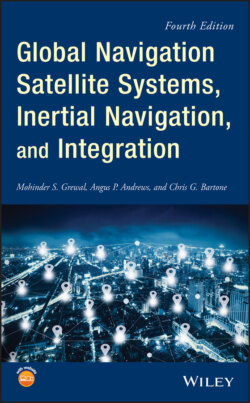Читать книгу Global Navigation Satellite Systems, Inertial Navigation, and Integration - Mohinder S. Grewal - Страница 103
3.4.3 Earth Rotation Model
ОглавлениеOur Earth is the mother of all clocks. It has given us the time units of days, hours, minutes, and seconds that govern our lives. Not until the development of atomic clocks in the mid‐twentieth century were we able to observe the imperfections in our Earth‐clock due to shifting mass distributions caused by tectonic events, the transfers of angular momentum with the atmosphere and hydrosphere, and the gradual slowdown from the transfer of energy and angular momentum within the Earth–moon system due to tides.4 Despite these, we continue to use Earth rotation as our primary time reference, adding or subtracting leap seconds to atomic clocks to keep them synchronized to the rotation of the Earth. These time variations are significant for GNSS navigation, but not for inertial navigation.
The value of earthrate in the World Geodetic System 1984 (WGS 84) Earth model is rad/s, or about 15.04109 deg/h. This is its sidereal rotation rate with respect to distant stars. Its mean rotation rate with respect to the nearest star (our Sun), as viewed from the rotating Earth, is 15 deg/h, averaged over one year.
